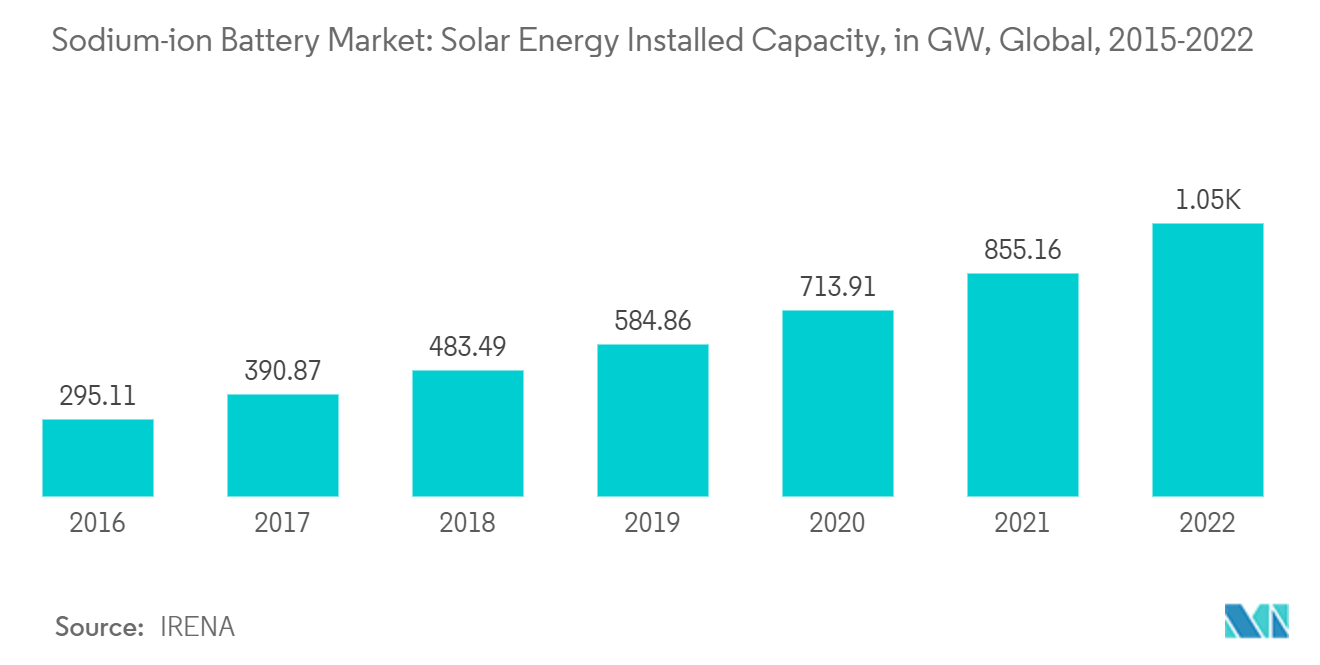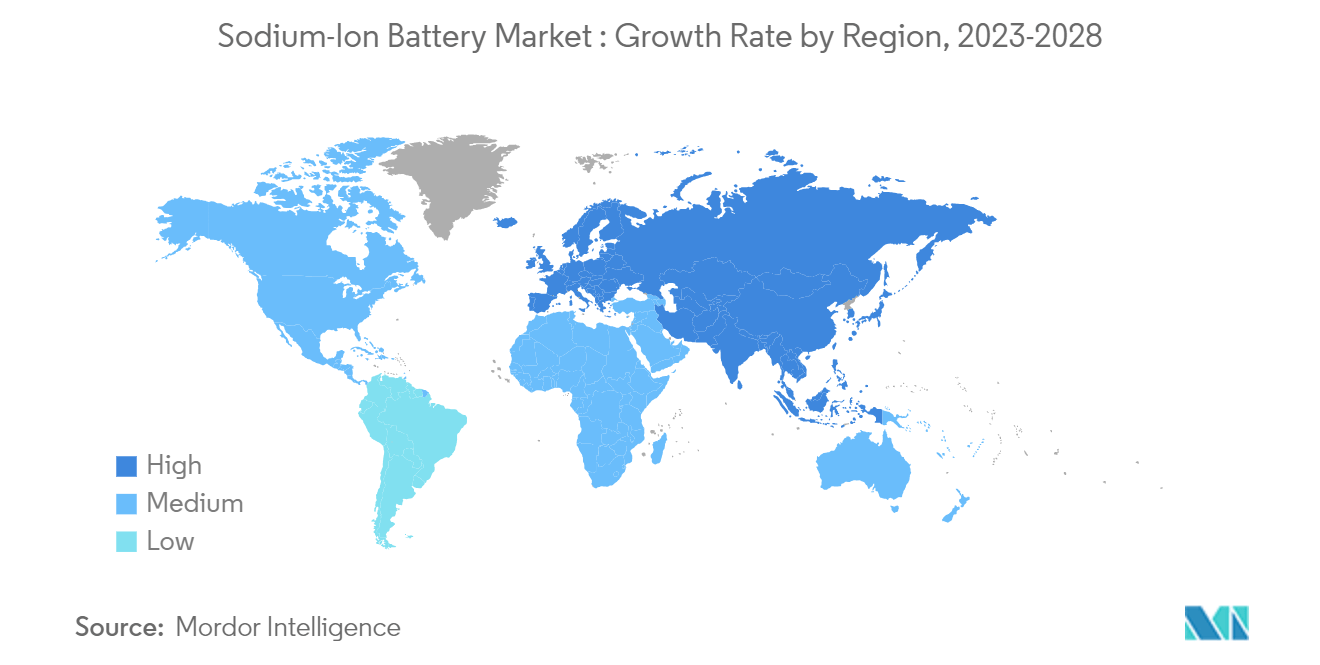Market Trends of Sodium-ion Battery Industry
Stationary Energy Storage is a Significant Segment for the Market
- Batteries are crucial in energy storage systems and are responsible for a significant portion of the system's total cost, especially in residential energy storage systems. Properties of sodium-ion batteries, such as high energy density, low charging time, a higher number of charging cycles, etc., make it preferable for this application.
- Sodium-ion batteries are also a viable means of energy storage in large-scale energy storage applications. This is mainly due to the low cost of sodium compared to lithium, similar chemistry, and intercalation kinetics to that of lithium, and the irreversible capacity of carbon anodes in sodium-ion batteries being less than that in lithium-ion batteries.
- The Sodium-ion batteries are expected to have considerable potential in energy storage system applications during the forecast period. The amount of energy generated by renewable sources such as solar and wind is witnessing massive growth, and energy storage is essential to ensure the continuity of energy supply.
- According to the International Renewable Energy Agency (IRENA), the world’s total installed solar PV capacity reached around 1046.61 GW in 2022, witnessing a 22.38% growth compared to the previous year. Likewise, the global wind installed capacity was more than 898 GW in 2022, recording more than 9% growth compared to 2021.
- Furthermore, renewable energy growth is likely to continue with the increasing support from the government and its ambitious renewable power targets. Moreover, according to the International Energy Agency (IEA), by 2050, solar PV, wind, and hydro are estimated to produce approximately 80% of the global electricity generation.
- As sodium-ion batteries are an essential energy storage technology with additional benefits, storing solar and wind energy is expected to provide a vital opportunity in the growing solar and wind energy market.
- On the other side, the cycling efficiency of sodium-ion batteries is not well-known, mainly because the rate capability obtained from hard carbon anodes is poor.
- However, in early 2020, scientists from Skoltech and the Moscow State University identified the electrochemical reaction associated with charge storage in the anode material for sodium-ion batteries (SIB), a promising class of electrochemical power sources. The findings and the anode manufacturing method developed by the team help bring closer the sodium-ion battery commercialization for stationary energy storage in Russia and beyond.
- Hence, the surging growth in renewable energy generation, the rising number of ongoing research development activities, and investments in sodium-ion batteries for stationary energy storage are expected to drive the market during the forecast period.

Europe is Expected to Dominate the Market
- In 2022, Europe became the largest region in the sodium-ion battery market owing to the ongoing research and increasing deployment of battery energy storage systems and electric vehicles.
- The new EU-funded project NAIMA, “Na Ion materials as essential components to manufacture robust battery cells for non-automotive applications,” had kickstarted in France. The European Commission awarded this project a Horizon2020 program grant of almost EUR 8 million. The duration of the program is 36 months, which started in December 2019 and ended in December 2022.
- The NAIMA project is expected to demonstrate that two new generations of highly competitive and safe sodium-ion cells developed and tested during the project are some of the most robust and cost-effective alternatives to current and future Li-based technologies for storage applications.
- NAIMA brings together a consortium, including 15 partners from eight European countries (including France, Germany, Sweden, Bulgaria, Spain, the Netherlands, Slovenia, and Belgium): Five being R&D organizations (including CNRS, CEA, NIC, IHE, and VITO), six SMEs (including TIAMAT, BIOKOL, IEIT, GOLDLINE, ACC, and ZABALA IC), and four large companies (including EDF, GESTAMP, SOLVAY, and UMICORE). These partners’ profiles cover the entire battery value chain and the diverse fundamental R&D fields required in the project.
- The project is led by the French company TIAMAT, which specializes in the design, development, and manufacture of sodium-ion battery cells and targets fast charging and high discharge current applications in mobility and stationary storage sectors.
- Within the project framework, six sodium-ion battery prototypes are expected to be tested in three multi-scale business scenarios to provide solid evidence about the competitiveness of the technology in three natural environments (renewable generation, industry, and private household).
- The United Kingdom-based company Faradion Ltd is one of the leading sodium-ion battery manufacturers worldwide. The company is one of the beneficiaries of the United Kingdom government’s USD 338.42 million Faraday battery challenge and is gearing up to supply sodium-ion batteries with an annual capacity of more than 1 GWh by 2024-25, worth more than approximately USD 100 million per year.
- Hence, the ongoing research work, increasing investments, and increasing demand for electric vehicles are expected to create ample opportunities for the players involved in the European region in the near future.


